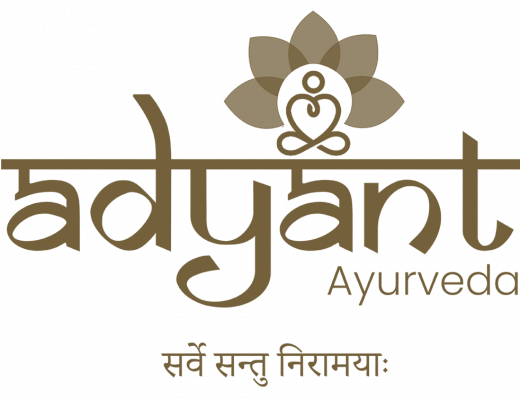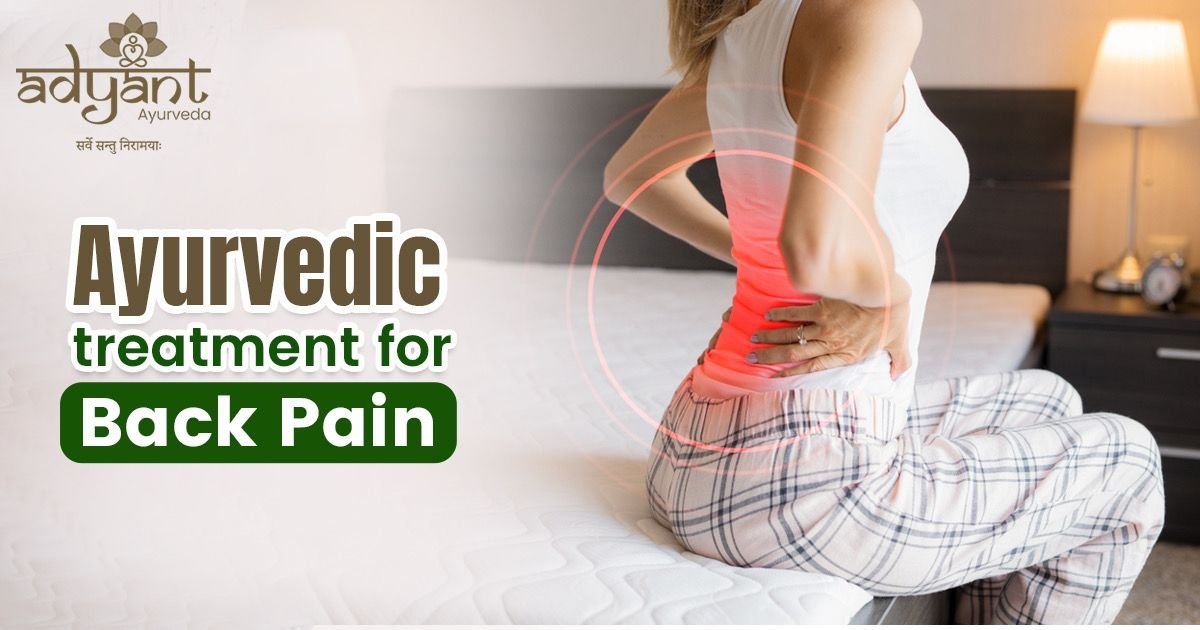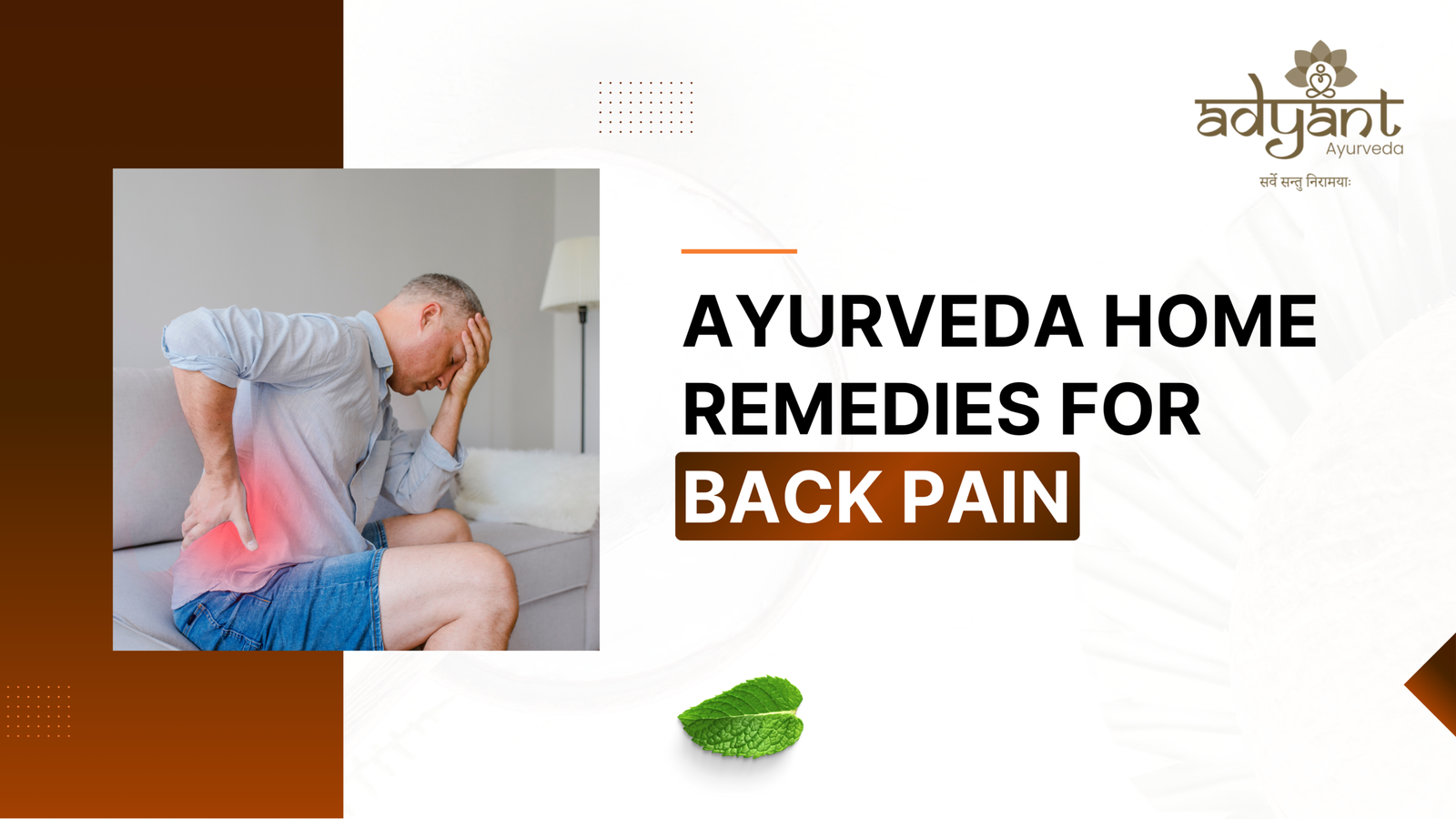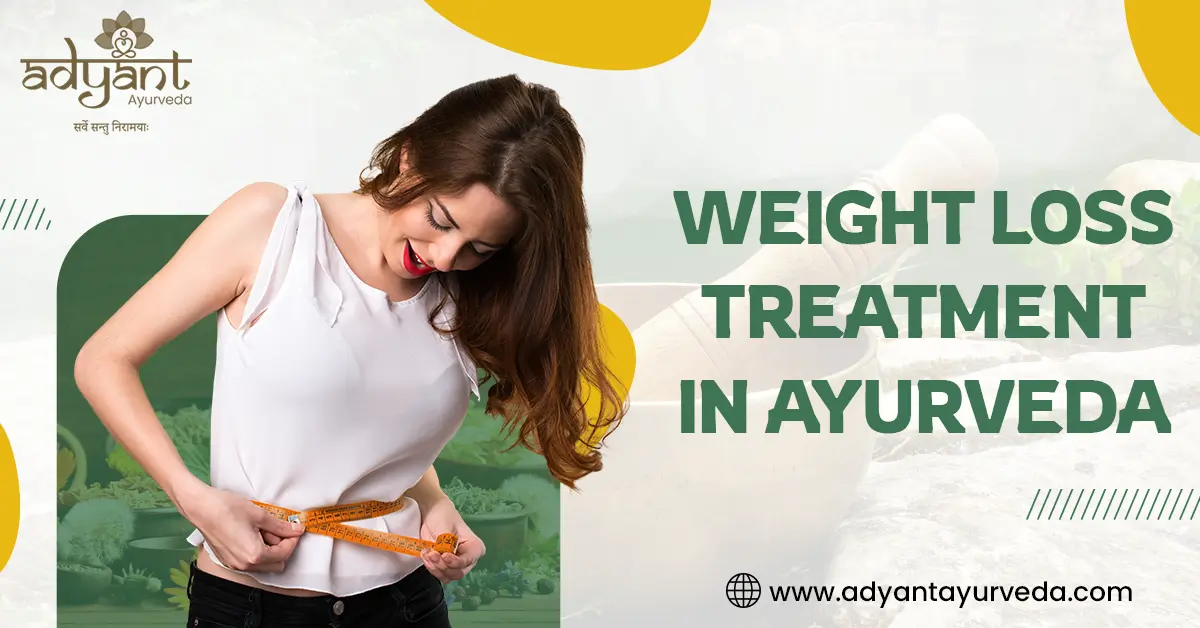Table of Contents
Toggle
What Is the Best Ayurvedic Treatment for Back Pain?
Ayurvedic Treatment for Back Pain focuses on balancing aggravated Vata Dosha, reducing Ama (toxins), nourishing weakened tissues (Dhatu), and strengthening the spine naturally.
Unlike painkillers or temporary physiotherapy, Ayurveda works at the root — improving nerve function, relaxing muscles, reducing inflammation, and restoring spinal stability.
With therapies like Kati Basti, Abhyanga, Basti (medicated enema), and Pizhichil, patients experience fast relief and long-term improvement.
Understanding Back Pain in Ayurveda (Vata Vyadhi)
Back pain, especially lower back pain, is one of the most common health problems globally. It affects people of all ages and may arise from poor posture, muscle strain, disc issues, or degenerative conditions. While modern treatments often provide only temporary relief through painkillers or surgery, Ayurveda offers natural and long-lasting solutions by addressing the root cause.
At Adyant Ayurveda, Bangalore, our expert Ayurvedic doctors provide holistic care for back pain using Panchakarma therapies, herbal medicines, yoga, diet, and lifestyle guidance. With 28+ years of experience, we focus on restoring spinal health, balancing Vata dosha, and preventing recurrence.
🌟 Why Choose Ayurveda for Back Pain Relief?
-
✔ Treats the root cause (Vata imbalance, tissue depletion, Ama accumulation)
-
✔ Uses safe, natural therapies without harmful side effects
-
✔ Strengthens spine, muscles, and joints
-
✔ Personalized treatments based on Prakriti (body constitution)
-
✔ Ensures long-term results with lifestyle support
🩺 Types of Back Pain in Ayurveda
| Ayurvedic Name | English Meaning | Symptoms |
|---|---|---|
| Katishoola | Lower back pain | Aching, stiffness |
| Gridhrasi | Sciatica | Radiating pain down legs |
| Katigraha | Lumbar stiffness | Restricted movement |
| Prana Vata Vikriti | Nerve irritation | Spasms, sharp pain |
| Sandhivata | Osteoarthritis | Grinding, degeneration |
🌀 Ayurvedic View of Back Pain (Doshas & Dhatus)
According to Ayurveda, aggravated Vata dosha is the main cause of back pain. It leads to:
-
Degeneration of Asthi (bones), Majja (marrow), and Mamsa (muscles)
-
Ama (toxins) blocking channels, causing stiffness & pain
-
Weak digestion (Agni Mandya) → poor nourishment → Dhatu Kshaya (tissue loss)
⚠️ Causes of Back Pain
Ayurvedic Causes
-
Vata imbalance (dryness, degeneration)
-
Ama accumulation
-
Weak digestion (Mandagni)
-
Dhatu Kshaya (tissue depletion)
Modern Causes
-
Muscle strain or ligament injury
-
Poor posture / prolonged sitting
-
Sciatica or slipped disc
-
Lumbar spondylosis/arthritis
-
Obesity & sedentary lifestyle
-
Psychological stress
🩻 Symptoms & Diagnosis in Ayurveda
Common Symptoms
-
Dull or sharp lower back pain
-
Radiating leg pain (sciatica)
-
Morning stiffness, spasms
-
Difficulty walking, bending, sitting
Ayurvedic Diagnostic Tools
-
Nadi Pariksha (pulse diagnosis)
-
Darshana & Sparshana (observation & palpation)
-
Prakriti Analysis (body constitution study)
-
Lifestyle & pain questionnaires
⚠️ Note: Panchakarma is contraindicated during pregnancy, acute infection, or recent surgery.
🌿 Best Ayurvedic Treatments for Back Pain
Panchakarma is the most effective Ayurvedic Treatment for Back Pain, especially for chronic and radiating pain (Gridhrasi).
Panchakarma Therapies
| Therapy | What It Does | Best For |
|---|---|---|
| Abhyanga (Oil massage) | Improves circulation, relaxes muscles | Mild to moderate pain |
| Kati Basti | Warm medicated oil pooled on lower back | Disc issues, stiffness |
| Matra Basti | Oil enema to balance Vata | Chronic back pain |
| Niruha Basti | Decoction enema for detox | Sciatica, nerve damage |
| Virechana | Pitta detox | Inflammation, nerve burning |
| Pizhichil | Oil bath therapy | Severe stiffness |
| Patra Pinda Sweda | Herbal poultice | Muscle spasms |
| Navarakizhi | Rice bolus therapy | Tissue nourishment |
| Agnikarma | Heat therapy | Radiating pain |
| Upanaha Sweda | Herbal poultice | Constant pain, swelling |
These therapies are personalized based on Vata type, pain severity, and constitution (Prakriti).
Ayurvedic Medicines for Back Pain
(To be taken only under a doctor’s guidance)
-
Yogaraj Guggulu – Anti-inflammatory, relieves stiffness
-
Mahayogaraj Guggulu – Strengthens joints & nerves
-
Dashamoolarishta – Relieves spasms, improves digestion
-
Trayodashang Guggulu – Effective for sciatica
-
Sinhanad Guggulu – Removes Ama, treats arthritis
-
Ekangveer Rasa – Useful in sciatica & paralysis
-
Mahavat Vidhwansa Rasa – For degenerative joint pain
-
Brihat Vata Chintamani Rasa – Supports nerve regeneration
Ayurvedic Herbs for Back Pain Relief
-
Nirgundi (Vitex negundo) – Relieves inflammation & stiffness
-
Ashwagandha (Withania somnifera) – Strengthens muscles, reduces stress
-
Shallaki (Boswellia serrata) – Improves joint mobility
-
Rasna (Pluchea lanceolata) – Effective for sciatica & stiffness
-
Dashamoola – Anti-inflammatory, tissue nourishing
-
Guggulu (Commiphora mukul) – Detoxifies & reduces pain
-
Bala (Sida cordifolia) – Nerve & muscle tonic
-
Guduchi (Tinospora cordifolia) – Anti-inflammatory & immunity booster
🏠 Effective Home Remedies for Back Pain
-
Warm castor oil massage
-
Garlic oil application
-
Ajwain compress for stiffness
-
Turmeric milk daily
-
Ginger tea to reduce pain
-
Fenugreek paste for relief
-
CCF tea (Cumin-Coriander-Fennel) to improve digestion
🍲 Diet & Lifestyle for Back Pain Relief
Recommended Foods
-
Warm, fresh meals
-
Stews, soups, khichdi
-
Ghee, sesame oil
-
Spices: ginger, cumin, fenugreek
-
Milk with turmeric
Avoid
-
Cold foods
-
Dry foods (chips, bread)
-
Excess travel
-
Overexertion
-
Late-night work
-
Junk food
-
Cold water
Daily Habits
-
Self-Abhyanga with sesame oil
-
Warm water all day
-
Gentle stretching
-
Good posture
-
Lumbar support while sitting
-
7–8 hours sleep
🧘 Yoga & Pranayama for Back Pain Relief
Recommended Asanas: Bhujangasana, Marjariasana, Setu Bandhasana, Balasana, Ardha Matsyendrasana, Shalabhasana, Dhanurasana
Pranayama: Anulom Vilom, Bhramari, Ujjayi
🌟 Real Success Stories at Adyant Ayurveda
-
Mechanical Back Pain – Full relief in 7 days with Abhyanga + Kati Pichu
-
Lumbar Spondylosis – 80% improvement in 8 days with Kati Basti + Swedana
-
Chronic Spondylosis – Long-term results with Vasa Sneha therapy
-
Sciatica (Gridhrasi) – Improved mobility with Chandrashoor + Matra Basti
Why Choose Adyant Ayurveda?
-
28+ years of clinical expertise
-
Specialists in Vata disorders & spinal care
-
Panchakarma-equipped centers
-
Personalized treatment plans
-
Evidence-backed herbal formulations
-
5 branches across Bangalore
📞 Book Your Consultation at Adyant Ayurveda
If you are suffering from back pain, sciatica, or lumbar stiffness, Ayurveda can help you live pain-free.
📍 Branches: Jayanagar | Indiranagar | Kalyan Nagar | Rajarajeshwari Nagar | Bannerghatta Road
📞 Call: 9972541009
🧑⚕️ Our Expert Doctors
-
Dr. Shree Lakshmi (BAMS, 28+ years experience) – Panchakarma & Spine Care Expert (Jayanagar branch)
-
Dr. Vidya (BAMS, 18+ years experience) – Specialist in musculoskeletal disorders (Kalyan Nagar branch)
-
Dr. Preethi (BAMS) – Back pain & Panchakarma expert (Rajarajeshwari Nagar branch)
-
Dr. Sumana Patvardhana (BAMS) – Ayurvedic Skin & Spine Care Specialist (Indiranagar branch)
👨⚕️ Content Reviewed By
Dr. Shree Lakshmi (BAMS, MD – Panchakarma Specialist)
28+ years of experience in treating spinal & musculoskeletal disorders at Adyant Ayurveda, Bangalore.
📖 References
-
Charaka Samhita – Chikitsa Sthana (Vata Vyadhi Management)
-
National Center for Biotechnology Information (NCBI) – Ayurveda in Spine & Musculoskeletal Disorders
-
WHO Global Report on Traditional & Complementary Medicine (2019)
⚠️ Medical Disclaimer
This content is for educational purposes only. Back pain can have multiple causes, and treatment should be taken only under the supervision of a qualified Ayurvedic physician.
FAQs – Ayurvedic Treatment for Back Pain
What is the best Ayurvedic treatment for lower back pain?
Ayurvedic treatments like Kati Basti, Abhyanga (herbal oil massage), and Basti (medicated enema) are highly effective for lower back pain. These therapies aim to balance the Vata dosha, reduce inflammation, and strengthen the spine.
Can Ayurveda cure lower back pain permanently?
Ayurveda addresses the root cause of back pain by restoring doshic balance and rejuvenating affected tissues. With consistent therapy, appropriate herbal remedies, and lifestyle modifications, many individuals experience long-term relief.
How long does it take to see results with Ayurvedic treatment?
The duration varies based on the individual’s condition. Acute back pain may see improvement within 1–2 weeks, while chronic conditions like lumbar spondylosis might require 2–3 months of dedicated treatment.
Which Ayurvedic oils are recommended for back pain relief?
Oils such as Mahanarayan Taila, Sahacharadi Taila, and Dhanwantharam Taila are commonly used. They possess anti-inflammatory properties and help in relieving muscle stiffness and pain.
Are there specific dietary recommendations in Ayurveda for back pain?
Yes. A Vata-pacifying diet is recommended, which includes warm, cooked foods and the use of spices like ginger, turmeric, and cumin. It’s advisable to avoid cold, dry, and processed foods.
Can Ayurvedic treatment help with sciatica?
Absolutely. Ayurveda treats sciatica (Gridhrasi) using therapies like Kati Basti, Basti, and herbal formulations such as Yogaraj Guggulu, aiming to alleviate nerve compression and inflammation.
Is back pain due to aging manageable with Ayurveda?
Yes. Age-related degenerative changes can be managed with Ayurvedic rejuvenation therapies (Rasayana), herbal supplements, and lifestyle adjustments to strengthen bones and muscles.
Do I need to continue Ayurvedic medicines indefinitely?
Not necessarily. Once the doshic balance is restored and symptoms subside, the Ayurvedic practitioner may gradually taper off medications, focusing on maintenance through diet and lifestyle.
Are there any side effects of Ayurvedic treatments for back pain?
When administered under the guidance of a qualified Ayurvedic physician, treatments are generally safe. However, it’s crucial to consult a professional to ensure therapies and herbs are appropriate for your constitution.
Can I combine Ayurvedic treatments with conventional medicine?
Combining treatments should be done cautiously and under medical supervision. It’s essential to inform both your Ayurvedic practitioner and conventional healthcare provider about all therapies and medications you’re undergoing.
What lifestyle changes support Ayurvedic treatment for back pain?
Incorporating regular yoga practice, maintaining proper posture, following a Vata-pacifying diet, and ensuring adequate rest can enhance the effectiveness of Ayurvedic treatments.
Are there specific yoga poses recommended for back pain relief?
Yes, poses like Bhujangasana (Cobra Pose), Marjariasana (Cat-Cow Pose), and Balasana (Child’s Pose) are beneficial. It’s advisable to consult with a qualified yoga instructor for personalized guidance.
How does stress impact back pain, and can Ayurveda help?
Stress can exacerbate back pain by increasing muscle tension and Vata imbalance. Ayurvedic practices like meditation, Abhyanga (oil massage), and herbal remedies can help manage stress and alleviate pain.
Is Ayurvedic treatment suitable for all ages experiencing back pain?
Yes, Ayurveda offers tailored treatments for individuals of all ages, focusing on the root cause and individual constitution (Prakriti) to ensure safety and effectiveness.
Can Ayurveda assist in post-surgical back pain recovery?
Ayurveda can support post-surgical recovery by enhancing tissue healing, reducing inflammation, and restoring doshic balance. However, it’s essential to consult with both your surgeon and an Ayurvedic practitioner before starting any treatment.








